Last updated: January 17, 2023
Article
50 Nifty Finds #10: An Extinct Monument
On October 21, 1922, President Warren G. Harding used the 1906 Antiquities Act to create Fossil Cycad National Monument. The act gives the president authority to designate significant scientific or scenic areas as national monuments. Managed by the National Park Service (NPS) and located in the southeastern Black Hills of South Dakota, the 320-acre national monument was the third one created specifically to protect fossils. President Harding’s proclamation noted, “Warning is hereby expressly given to all unauthorized persons not to appropriate, injure, destroy, or remove any of the fossils of this monument.” Before the decade was out, however, the fossils at the surface were gone.
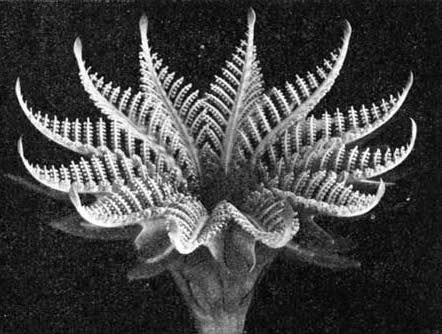
The fossil plants in the national monument weren’t actually cycads (tropical and subtropical palm-like plants). Most of the fossils found were cycadeoids (called Bennettitales by scientists), an extinct order of plants that flourished during the Cretaceous (145 to 66 million years ago). The fossils of these "cycad-like" seed plants found at Fossil Cycad National Monument are scientifically important because they preserved details of the plant’s shape and reproductive structures not found elsewhere.
The site was confirmed about 1890 when ranchers began selling the “petrified pineapples” as curiosities. Scientists soon came to buy specimens for their museums. In 1898 George R. Wieland, a paleontology student at Yale University, visited the site. He became fascinated with the fossils, refocused his research to paleobotany, and became the world’s leading expert on fossil cycads. He also began a campaign for the federal government protect the site. Even as the monument was under consideration, however, there were reports that most of the surface fossils were gone. The Department of the Interior (DOI) endorsed the establishment of the monument, however, because erosion would continue to expose more fossils at the surface.
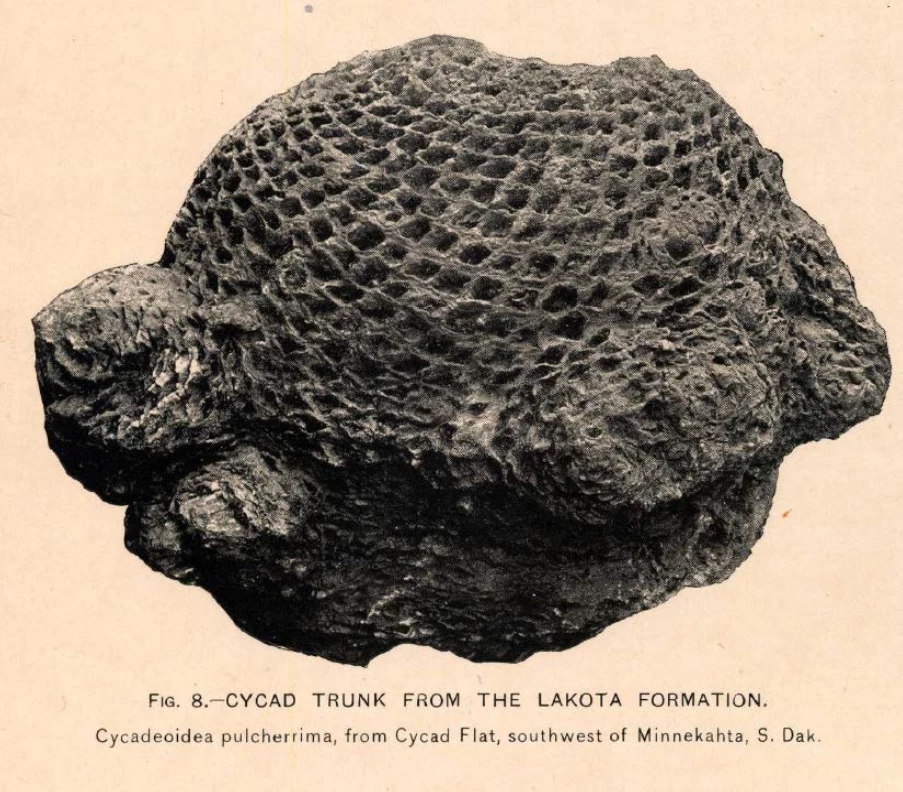
The NPS director’s annual reports in the 1920s and 1930s note that the NPS didn’t appoint a custodian for the monument. Administratively it was assigned to the superintendent at Wind Cave National Park but in practice local ranchers kept an informal eye on the site as best they could. Two small wooden signs (one of which is in the NPS History Collection) proclaimed “No Prospecting” but did little to protect the site when fossils appeared at the surface. In the 1920s permits were occasionally issued to collect specimens for display or museum collections at universities.
By November 20, 1929, an NPS report concluded, “All available specimens have been picked up, and there is nothing left that is of interest to visitors.” Just seven years after its establishment, the monument was seen as a liability for the National Park System. “Unless Professor Wieland, or someone, can furnish information indicating some purpose to be served by the area, it would seem to be desirable to discontinue it as a national monument.”
Fossil Cycad National Monument never officially opened to the public and didn’t have a visitor center or public programs. The entrance was a private road, but collectors went to the site anyway. Surface fossils were taken as soon as they were exposed. In 1933 the Park Service Bulletin reported vandalism at the site. “Recently Superintendent Edward D. Freeland of Wind Cave Park visited the Fossil Cycad Monument for the dual purpose of collecting a few specimens for display at his park and obtaining first-hand information concerning the monument in order to be able to give out more intelligent information to park visitors.” Freeland reported that it took “almost an entire day to find even a few small specimens without excavation, which led him to believe that souvenir hunters have carried away practically all cycads that were lying around on the surface.” Freeland recommended discouraging travel to the monument. When the NPS decided to exhibit a fossil cycad at the Chicago World’s Fair in 1933, it had to borrow a specimen from a collector.
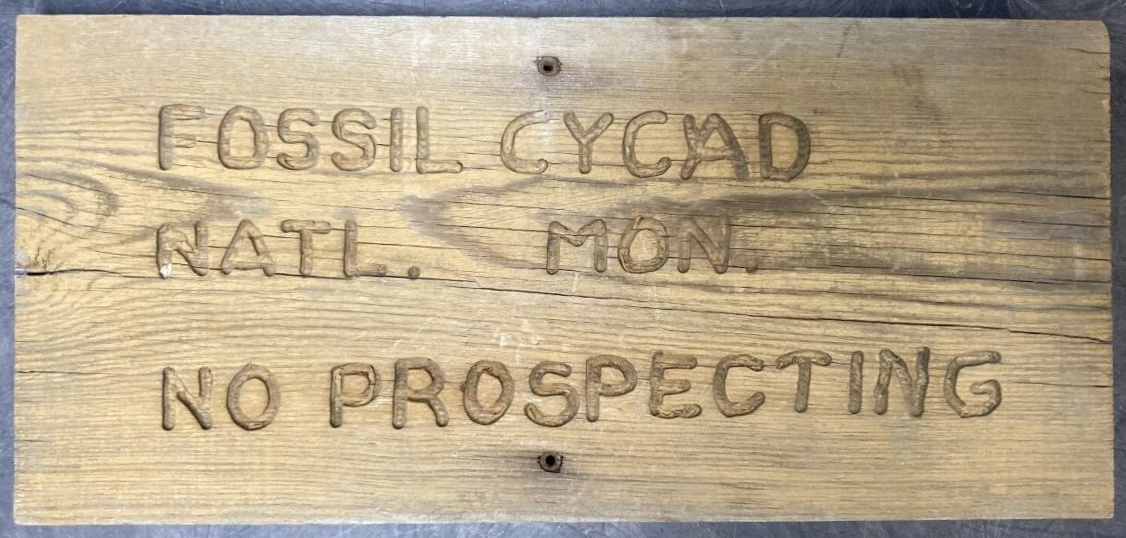
Wieland pushed for development of the monument, but NPS Associate Director Arno B. Cammerer wrote to him on March 23, 1933, that “development comes at a most unfortunate time because of the financial situation” resulting from the Great Depression—even as he reassured Wieland of the service’s continued interested in the monument. Wieland also approached the NPS about extending the boundaries of the monument by one square mile. The NPS wanted a study of the area, noting “if Wieland thinks good specimens can be found by excavating it might be worthwhile protecting.” On August 12, 1935, Cammerer noted that there were no specimens on the surface and the NPS “has no fossils.”
At the service’s request, Wieland and a team of 13 men from the Civilian Conservation Corps (CCC) started an excavation at the site on October 27, 1935. They used picks, shovels, power drills, and dynamite to uncover more than a ton of fossils one to five feet below the surface. NPS Acting Chief Geologist Caroll H. Wegemann shut down the excavation on November 15, but Freeland reported that the excavation had “unquestionably proven that numerous cycads still remain on the monument and excellent specimens have been found.”
In a December 2, 1935, press release Secretary of the Interior Harold L. Ickes announced plans to retain the national monument. He noted, “Recently found specimens of fossil cycads, fernlike plants that grew over a hundred million years ago, indicate the desirability of retaining the area as a national monument.” The press release acknowledged that since 1922 “no supervisory staff was installed through lack of funds.” It went on to state that the recovered fossils were stored at Wind Cave National Park “where they will be held in the park museum until facilities for caring for them are provided at the Fossil Cycad National Monument.” One specimen was placed on display at Wind Cave. The rest were “properly labeled and carefully stored” at the park.
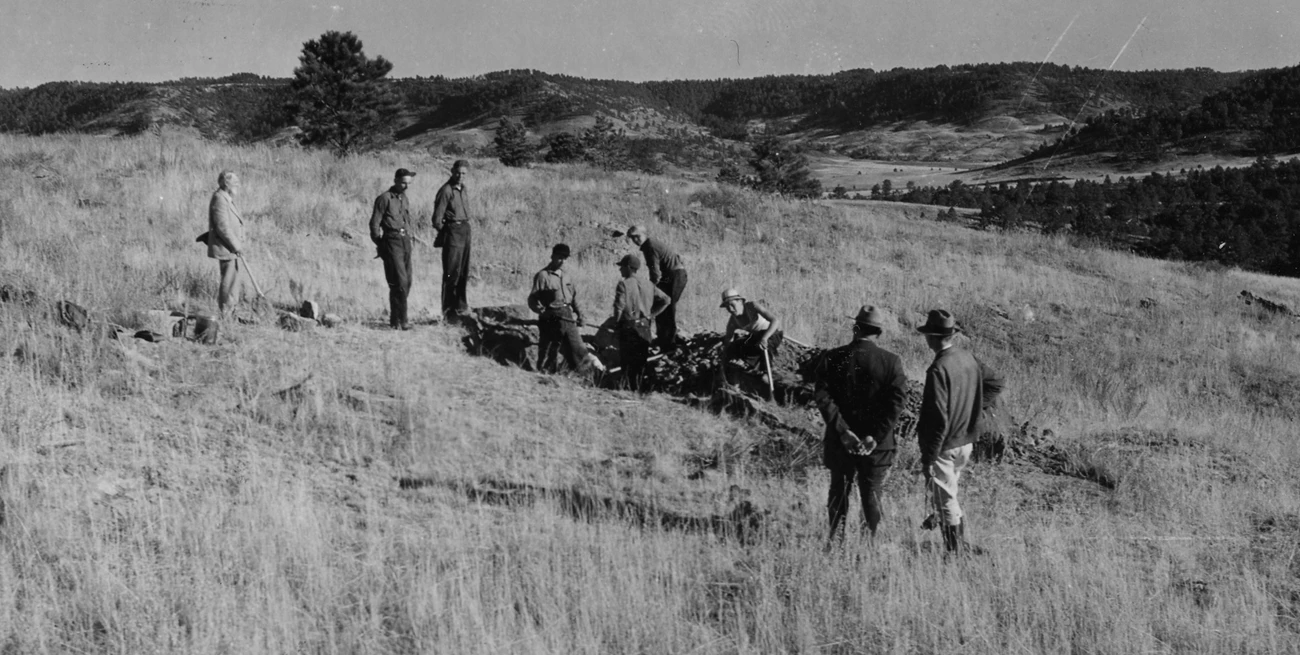
The relationship between Wegemann and Wieland soured further when Wegemann accused him of stealing fossils. From Yale University Wieland responded to the accusation on March 23, 1936, stating, “Without saying anything to anyone I sent a good healthy shipment of important in situ materials from our November work at the monument, and shipped here to our laboratory.” In 1937 local residents informed the NPS that Wieland also took tons of fossils before the area was set aside as a national monument. Wieland admitted in 1939 that he had removed more than 1,000 fossils ahead of NPS administration of the site.
In 1936 and 1937 Wieland continued to push for development of the monument, even providing drawings for a visitor center. The NPS rejected it as too expensive. The site was also considered too specialized when in 1937 the NPS noted:
“Developments of additional areas cannot be undertaken unless their justification is unimpeachable, and their future maintenance is assured. The Fossil Cycad National Monument does not satisfy either of these requirements. It is realized that the area is of outstanding paleobotanical interest. But it is also realized that the subject of fossil cycads does not have a broad appeal and, therefore, extensive development of the monument would benefit only a limited group of people. This is particularly true since the area does not possess other outstanding attractions. The scenery is neither impressive nor is it unusual; the geological interest, other than its paleobotanic relations, is not phenomenal; the area is too small for wildlife preservation; the terrain does not lend itself well to recreational development, and there is little historic interest.”
On December 16, 1937, NPS Associate Director Arthur E. Demaray wrote to Wieland regarding his “desire to examine and display fossils.” The Carnegie Institute agreed to pay the freight to ship the materials from Wind Cave to Yale. NPS representatives were to “help label, weigh, display, and photograph [the fossils] for permanent record. Upon completion of this catalogue, you will proceed to prepare material for examination and will display it in the usual scientific manner. Understand you have other specimens. Copy the manuscript to the National Park Service and your proposal for an adequate in situ [display] at Fossil Cycad National Monument. Upon completion of these studies, all will be returned to the custodian at Fossil Cycad National Monument. Material will at all times remain property of US Government. If you cannot complete study the specimens remain at the disposal of the National Park Service. Appreciate acknowledgement from you.”
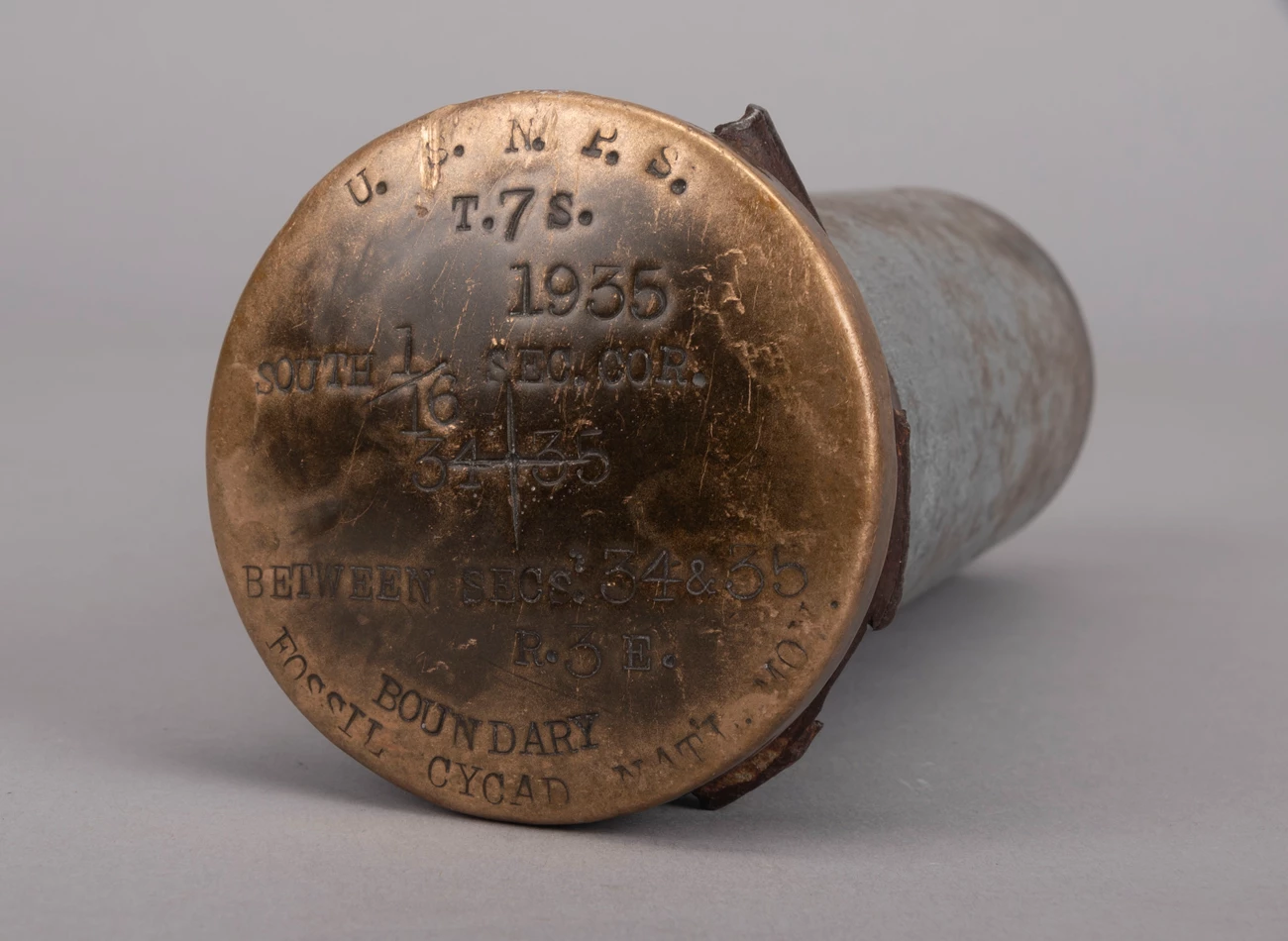
About 1,700 pounds of fossils were shipped to Wieland on January 20, 1938. One specimen remained on display at Wind Cave, described by Wegemann as “an exceptionally fine one [that] must weigh some four hundred pounds.” He recommended in March 1938 that it remain at Wind Cave. Freeland described that specimen in 1945 as “about 18 inches high and one foot in diameter. The specimen had numerous fossilized buds attached to the trunk near the top.” Freeland wrote, “It was later determined in the Director’s Office that all the specimens unearthed by CCC were to be packed and shipped to Yale. Believing that we had a logical and reasonable reason for having at least one specimen on display to satisfy the curiosity of the public regarding the national monument, we asked to retain the specimen. For some reason Dr. Wieland objected strenuously to this and after much correspondence, I was ordered to send this specimen also. During the years that I remained at Wind Cave after the fossils were shipped away, I wrote periodically in an attempt to have the fine specimen, or any specimen at all, returned for display purposes, but did not succeed. I understand that there are literally tons of specimens of various sizes stored at Yale and I consider those specimens excavated in 1934 [sic] as definitely government property.”
The NPS considered development of the monument throughout the late 1930s and early 1940s. One plan, costing $73,300, called for a museum building, exhibits, custodian’s residence, public road, and parking lot. Many within the NPS continued to question the need for the development, pushing an exhibit at Wind Cave where it would be seen by more visitors. Others proposed a “simple structure placed on the monument to house a few specimens…nothing more than a shelter for the exhibits erected by a few CCC boys in a few days.”
In December 1942 the Region II director informed NPS Director Newton B. Drury that “we do not believe that the development of this area is justified.” The next month, a proposal suggested that a wayside exhibit, designed so “that it does not require an attendant and would not be subject to vandalism,” be placed at an overlook along the highway. Even that wasn’t installed because World War II redirected men and money elsewhere.
Wieland continued his unsuccessful mission to develop the monument until his death in 1953. Ironically, if he hadn’t removed the specimens to the museum at Yale, he might have found a more receptive audience for his proposals for a visitor center at the monument.
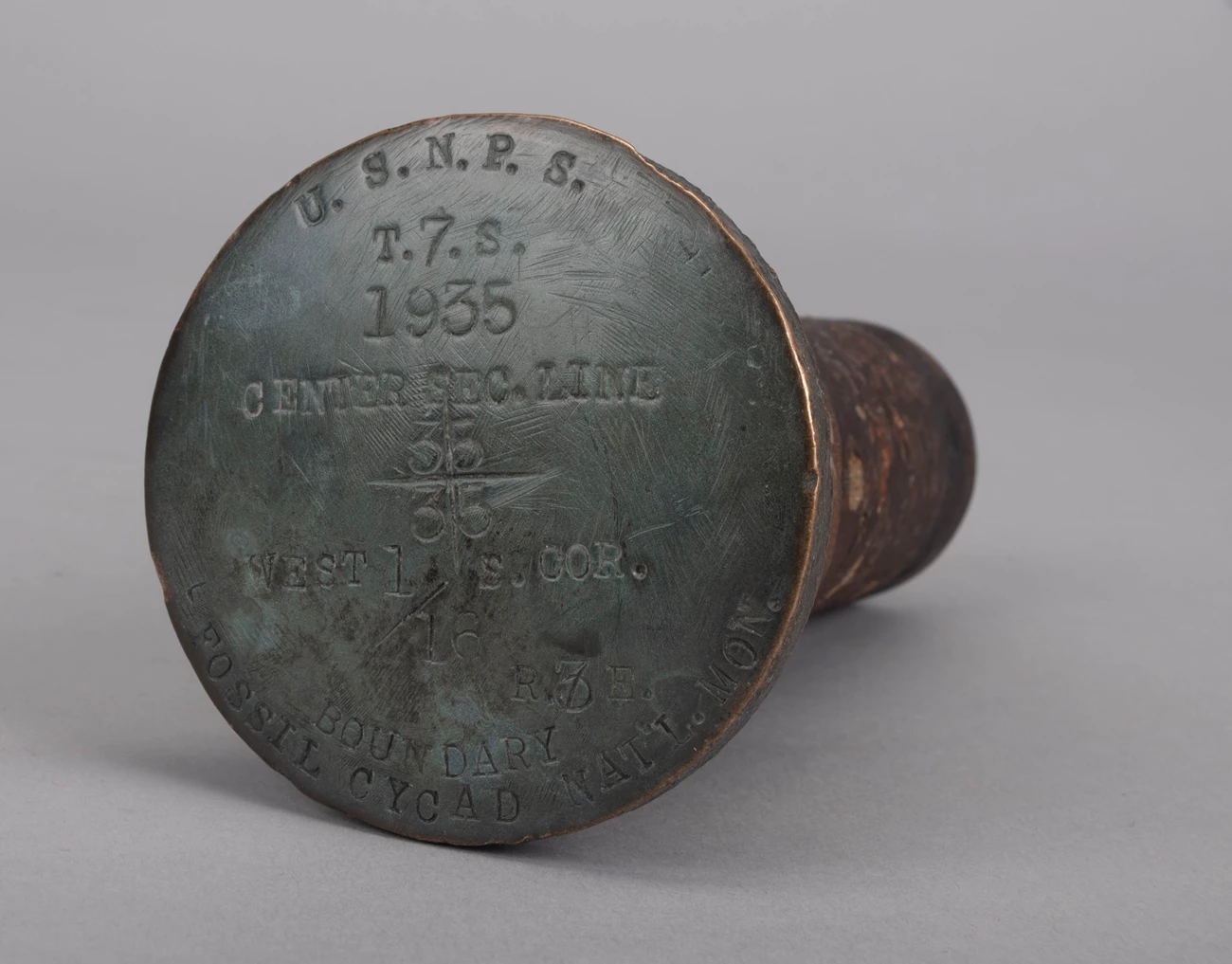
The DOI supported legislation introduced in the 84th Congress to abolish Fossil Cycad National Monument as a unit of the NPS. President Dwight D. Eisenhower signed the bill into law on August 1, 1956. The NPS press release noted its “abolition was requested by the NPS in line with its policy to eliminate from the National Park System those areas considered to be of less than national significance.” It became effective September 1, 1957, and the land was turned over to the Bureau of Land Management (BLM).
The legislation abolishing the monument noted "that if any excavations on such lands for the recovery of fissionable materials or any other minerals should be undertaken, such fossil remains discovered shall become property of the Federal government." In 1980 construction within the boundaries of the revoked monument unearthed more fossils. In 2015 BLM designated the 320 acres of the former monument as an area of critical environmental concern (ACEC). With the designation, the site was closed to mineral leasing, casual or commercial fossil gathering, renewable energy development, and many other uses.
Fossil Cycad National Monument isn’t the only deauthorized unit. It is, however, an example of how earlier NPS management practices, neglect, internal disagreements, and budget shortfalls made it possible for one man to love a park to death. The materials from Fossil Cycad in the NPS History Collection serve as a cautionary tale and are among a handful of objects that represent the NPS administration of this “extinct” monument.
Sources:
Assembled Historic Records of the NPS (HFCA 1645, Series III, Subseries D). NPS History Collection, Harpers Ferry Center, West Virginia.
Associated Press. (1956, August 2). “Fossil Cycad Park Abolished in S.D.” Argus-Leader (Sioux Falls, South Dakota), p. 11.
Bureau of Land Management (2015, September). South Dakota Approved Resource Management Plan. BLM South Dakota Field Office.
Giaimo, Cara. (2017, July 11). “The National Park That Was Stolen to Death.” Atlas Obscura. Accessed January 15, 2023, at https://www.atlasobscura.com/articles/fossil-cycad-national-monument-stolen-george-wieland
Mackintosh, Barry. (1995). Former National Park Service Units: An Analysis.
National Park Service. (1924). Report of the Director of the National Park Service to the Secretary of the Interior for the Fiscal Year Ended June 30, 1923, and the Travel Season 1923. Washington, DC.
National Park Service. (1925). Report of the Director of the National Park Service to the Secretary of the Interior for the Fiscal Year Ended June 30, 1924, and the Travel Season 1924. Washington, DC.
National Park Service. (1926). Report of the Director of the National Park Service to the Secretary of the Interior for the Fiscal Year Ended June 30, 1925, and the Travel Season 1925. Washington, DC.
National Park Service. (1933, January-February). “Vandalism Apparent at Fossil Cycad Monument.” Park Service Bulletin, Vol. III, No. 1, p. 14.
Nixon, Lance. (2019, September 24). “A South Dakota Mystery: Who Stole the Fossils from Fossil Cycad National Monument.” Capital Journal. Accessed January 14, 2023, at https://www.capjournal.com/news/a-south-dakota-mystery-who-stole-the-fossils-from-fossil/article_a6e3f620-9abb-11e3-a584-001a4bcf887a.html
Pratt, Sara E. (2014, August 4). “Benchmarks: September 1, 1957: Fossil Cycad National Monument is Dissolved.” Earth Magazine. Accessed January 14, 2023, at https://www.earthmagazine.org/article/benchmarks-september-1-1957-fossil-cycad-national-monument-dissolved/
Santucci, Vincent L. and Hughes, Marikka. (1998). “Fossil Cycad National Monument: A Case of Paleontological Resource Mismanagement.” Available at https://irma.nps.gov/DataStore/DownloadFile/646450
Santucci, Vincent L. and Knight, Cassi. (2022, February 25). “Fossil Cycad National Monument.” Accessed January 14, 2023, at https://www.nps.gov/articles/fossil-cycad-national-monument.htm
Santucci, Vincent L. (2022, December 1). “Centennial Commemoration for the Creation of Fossil Cycad National Monument.” Accessed January 15, 2023, at https://www.nps.gov/articles/000/centennial-commemoration-for-the-creation-of-fossil-cycad-national-monument.htm
Santucci, V.L. and J.M. Ghist. (2014). “Fossil Cycad National Monument: A History from Discovery to Deauthorization”. Proceedings of the 10th Conference on Fossil Resources. Dakoterra 6: 82-93.
Wieland, G. R. (1916). American Fossil Cycads. Volume II. Taxonomy. Carnegie Institute of Washington, Washington, D.C. Publication Number 34.
Zimny, Michael. (2020, August 12). “Fossil Cycad: The Monument that Wasn’t.” South Dakota Public Broadcasting. Accessed January 14, 2023, at https://www.sdpb.org/blogs/history/fossil-cycad-the-national-monument-that-wasnt/
